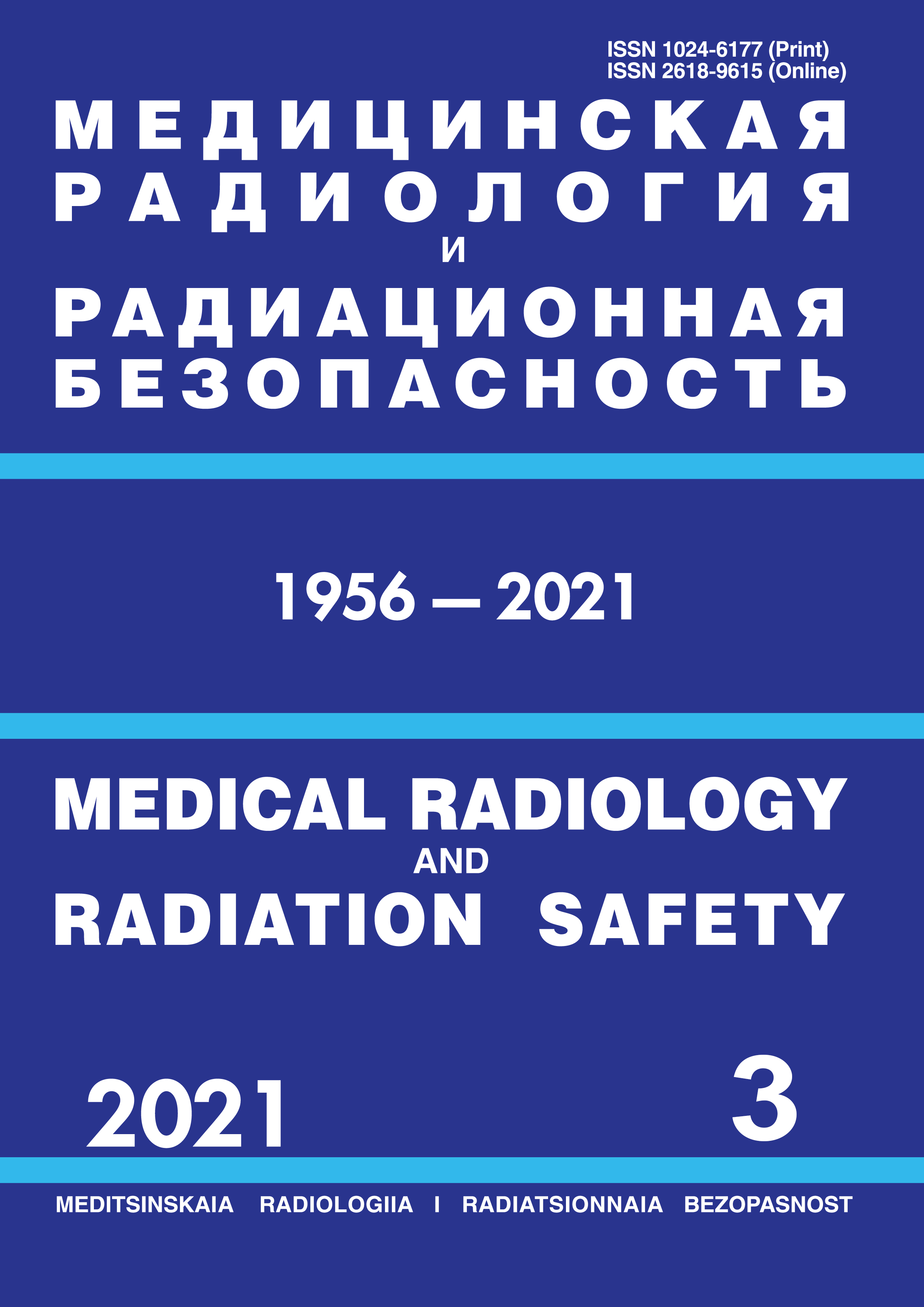Russian Federation
Russian Federation
Russian Federation
CSCSTI 76.33
CSCSTI 76.03
Russian Classification of Professions by Education 31.06.2001
Russian Classification of Professions by Education 31.08.08
Russian Classification of Professions by Education 32.08.12
Russian Classification of Professions by Education 14.04.02
Russian Library and Bibliographic Classification 534
Russian Library and Bibliographic Classification 51
Russian Trade and Bibliographic Classification 5712
Russian Trade and Bibliographic Classification 5734
Russian Trade and Bibliographic Classification 6212
Russian Trade and Bibliographic Classification 5708
Purpose: To study the possibilities of using 67Ga-citrate in patients with systemic manifestations of sarcoidosis to identify foci of pathological accumulation of the drug and assess the degree of process activity. Material and methods: Radionulide study with 67Ga-citrate was performed in 140 patients with respiratory sarcoidosis and suspected extrapulmonary localization. In addition, all patients underwent X-ray examination of the lungs, MSCT of the organs of the chest and abdominal cavity, SPECT of the lungs with radiopharmaceutical macroaggregates of albumin, ultrasound of the abdomen, pelvis, MRI of the head was performed in 16 patients with suspected neurosarcoidosis. Results: Most patients (n = 125) showed changes in the lungs, manifested by a bright glow (yellow or purple) on the computer screen, which indicated a pronounced impaired function of lymphoid tissue. In 22 patients, the changes were recurrent. The results correlated with published data on damage to the nervous system (r = 0.96), musculoskeletal system (r = 0.97), parotid glands (r = 0.91), liver, spleen (r = 0.83) . At the same time, the results for eye damage (r = 0.23), ENT organs (r = 0.15), intestines (r = 0.48) were significantly different. In our study, no heart lesions were detected in any case. Conclusions: The use of positive scintigraphy with Ga-67 citrate, taking into account the whole body scan and SPECT of areas of interest of interest (chest cavity, abdominal cavity, head, pelvis) is effective for the diagnosis of systemic sarcoidosis and in determining the activity of the process. The study is recommended to be performed 72 hours after intravenous administration of the drug. The combination of CT, MRI and radionuclide studies allows you to obtain reliable information about the activity of the process, to identify the localization of increased metabolic activity, that is, the topography of active sarcoidosis.
sarcoidosis, 67Ga-citrate, SPECT
1. Landi C, Carleo A, Cillis G, Rottoli P. Sarcoidosis: Proteomics and New Perspectives for Improving Personalized Medicine // Expert. Rev. Proteomics. 2018. V.15, No.10. P. 829-835. DOI:https://doi.org/10.1080/147 89450.2018.1528148.
2. Vizel' A.A., Vizel' I.Yu., Amirov N.B. Epidemiologiya sarkoidoza v Rossiyskoy Federacii // Vestnik sovremennoy klinicheskoy mediciny. 2017. T.10, №.5. C. 66-73 DOI: 10.20969/ VSKM.2017.10(5).66-73.
3. Tihonovich E.L., Vezikova N.N., Markelova O.A., Malysheva I.E. Epidemiologiya, osobennosti kliniki, diagnostiki i lecheniya sarkoidoza v Karelii // Uchen. zap. Petrozavod. gos. un-ta. Ser.: Estestvennye i tehnicheskie nauki. 2015. T.6, №.151. S. 67-71.
4. Elizabeth V, Arkema EV, Johan Grunewald J, Kullberg S. et al. Sarcoidosis Incidence and Prevalence: a Nationwide Register-Based Assessment in Sweden // Eur. Respir. J. 2016. V. 48. P. 1545-48.
5. Baughman RP, Field S, Costabel U et al. Sarcoidosis in America. Analysis Based on Health Care Use // Ann Am Thorac Soc. 2016. V.13, No.8. P.1244-52. DOI:https://doi.org/10.1513/AnnalsATS.201511-760OC.
6. Fomin V.V., Brovko M.Yu., Kalashnikov M.V., Sholomova V.I., Rozina T.P., Akulkina L.A., Pershina A.E. , Yanakaeva A.Sh., Nekrasova T.P. Porazhenie pecheni pri sarkoidoze // Terapevticheskiy arhiv. 2019. №. 4. S. 4-12. DOI:https://doi.org/10.26442/00403660.2019. 04.000179
7. Ungprasert P, Matteson EL. Neurosarcoidosis // Rheum. Dis. Clin. North Am. 2017. V.43, No.4. P. 593-606. Epub 2017 Aug 23. DOI:https://doi.org/10.1016/j.rdc.2017.06.008.
8. Ibitoye RT, Wilkins A, Scolding NJ. Neurosarcoidosis: a Clinical Approach to Diagnosis and Management // J.Neurol. 2017. V.264, No.5. P.1023-28. DOIhttps://doi.org/10.1007/s00415-016-8336-4.
9. Vizel' A.A., Amirov N.B. Sarkoidoz i porazhenie organov sistemy pischevareniya // Vestnik sovremennoy klinicheskoy mediciny. 2010. №.1. S. 43-50.
10. Valeyre D, Prasse A, Nunes H, Uzunhan Y, Brillet PY, Müller-Quernheim J. Sarcoidosis // Lancet. 2014.V.383, No.9923. P.1155-67. DOI:https://doi.org/10.1016/S0140-6736(13)60680-7
11. Lebedeva M.V., Popova E.N., Ponomarev A.B. i dr. Vnelegochnye proyavleniya sarkoidoza // Vrach. 2011. №3. S.43-45.
12. El Sayed F, Torbey G, Youssef H, Chababi M. Childhood Sarcoidosis: Diagnostic Issues // Dermatol. Online J. 2013. V.19, No.10. P.20037.
13. Lishmanov Yu.B, Chernov V.I. Radionuklidnaya diagnostika dlya prakticheskih vrachey / Tomsk: STT, 2004. 394 c.
14. Gezer N, Başara I, Altay C, Harman M, Rocher L, Karabulut N, Seçil M. Abdominal Sarcoidosis: Cross-Sectional Imaging Findings // Diagn Interv Radiol. 2015. V.21, No.2. P.111-117. DOI:https://doi.org/10.5152/dir.2014.14210.
15. Chapman MN, Fujita A, Sung EK, Siegel C, Nadgir RN, Saito N, Sakai O. Sarcoidosis in the Head and Neck: an Illustrative Review of Clinical Presentations and Imaging Findings // AJR Am. J. Roentgenol. 2017. V.208, No.1. P. 66-75. DOI:https://doi.org/10.2214/AJR.16.16058.
16. Heinle R, Chang C. Diagnostic Criteria for Sarcoidosis // Autoimmun Rev. 2014. V.13, No.5. P.383-87. DOI:https://doi.org/10.1016/j.autrev.2014. 01.035.
17. Aratfni T, Narabayashy I. Komori N, et al. Usefulness of Tc-99mMIBI SPECT in Predicting Multidrug Gene Expression Levels in Non-Small Cell Lung Cancer a Preliminary // Ann Nucl. Med. 2001. V.15, No.4. P.313-19.
18. Korchagina E.O. Rezul'taty kliniko-radionuklidnyh issledovaniy u bol'nyh sarkoidozom organov dyhaniya // Ukrainskiy medicinskiy al'manah. 2009. T.12, № 2. S. 85-87.
19. Videnovic Ivanov J, Vucinic Mihailovic V, Artiko V, et al. Responsiveness of FDG PET/CT to Treatment of Patients with Active Chronic Sarcoidosis // Clin. Nucl. Med. 2013. V.38, No.7. P. 516-21.
20. Zaycev A.A., Antipushina D.N., Sivokozov I.V. Prakticheskie vozmozhnosti PET / KT v ocenke aktivnosti i rasprostranennosti sarkoidoza // Pul'monologiya. 2013. T.6. S.119-122.





